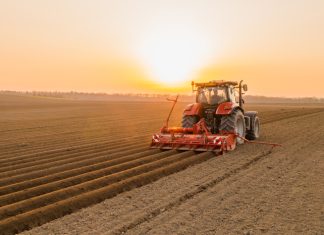On 15 November 2022 the world celebrated the fourth International Whole Grain Day to shed light on the role that whole grains play in sustainable food systems and healthier diets. In a time when resilient, sustainable and healthy food systems are becoming increasingly important, experts from around the world argued that grains have minimal environmental impact, are nutritionally dense and weather resistant, and can be stored for long periods.
But most important is the role of whole grains in food security. Seed selection decisions and information of new seed releases have provided producers with solutions that boost performance.
Nowadays progress in agriculture is spurred on by technologies that give new insights into production practices as well as maximise yield potential, insect protection and drought tolerance. Producers are growing crops more efficiently each season.
Comparative studies by the Bureau for Food and Agricultural Policy (BFAP) indicate average yields of maize and soybeans in the United States (USA) to be in the region of 11 t/ha and about 3,5 t/ha respectively, while in South Africa it is 7,5 t/ha and 2 t/ha (Graph 1). Local maize yields increased by almost 3,5% per year between 2017 and 2021. The data also show the South African yield growth trends for maize and soybeans when compared with international trends, specifically major role-players such as the USA, Brazil and Argentina. The average yields of wheat in the Western Cape (excluding irrigated wheat), on the other hand, have been shown to be in line with that of the big producers like Argentina, Russia and Australia – despite being stagnant between 2017 and 2021.

Source: BFAP
In the USA, agricultural innovation and new traits have led to strong competition amongst producers to be the best of the best and they are setting yield records unheard of before.
Many people think that high-yield contests serve no purpose other than bolstering egos. However, contest winners say competition pushes them to try new and innovative technologies and agronomic tactics. They tweak practices and push boundaries every season to determine what will or won’t work on their farm. They insist that it is an investment in research and development to determine the future potential of yield and profit.
Most producers agree that the opportunity to learn from other growers has been the biggest benefit of participation in these contests and networking with other participants has improved their farming operations.
Wheat
The US National Wheat Foundation (NWF) sponsors an annual contest which is designed to encourage wheat producers to strive for high yield, quality and profit while trying new and innovative management strategies. This year wheat struggled under adverse weather conditions in many parts of the traditional growing states such as Kansas, Texas and Oklahoma. Ultimately, growers from 27 states participated in the contest which is now in its seventh year.
In 2022, the National Wheat Yield Contest recorded impressive yield totals overall, with three contest entries harvesting more than 13,450 t/ha. The top yield was 15,56 t/ha of irrigated, soft white winter wheat – beating the previous contest high of 14,23 t/ha recorded in 2019.
This year, the winners of the dryland winter wheat and irrigated spring wheat categories yielded 11,17 t/ha and 13,14 t/ha respectively, both hailing from Washington. A grower in Oregon topped the dryland spring wheat category with 8,41 t/ha.
Maize
In 2021, the winner of the National Corn Growers Association (NCGA) National Corn Yield Contest in the conventional non-irrigated class (Corn Belt states) produced a maize yield of 23,87 t/ha in Illinois. He said that soil-matched seed technology, field drainage, plant stress avoidance, valuable field data and timely fertility were crucial for high-yield maize. Another winner who was pushing higher plant populations, won the conventional non-irrigated class with a maize yield of 26,32 t/ha. He farms in the state of Virginia, known for its fertile soils with high organic matter.
The 2021 NCGA National Corn Yield Contest third-place winner hailed from Kentucky, where he produced 21,85 t/ha of maize in the strip-till, minimum-till, mulch-till, ridge-till non-irrigated class.
Soybeans
The 2021 Missouri Soybean Association Soybean Yield Contest winner grew his crop in the non-irrigated conventional till category and yielded 7,05 t/ha. In the 2021 Arkansas ‘Grow for the Green’ Yield Contest Division Five, one producer won both first and second place and was crowned state winner with a soybean yield of 8,79 t/ha (state record) and 6,87 t/ha. He attributed his soybean yield gains to early planting, improved seed genetics, reduced plant population and a shift to a carbon-based fertility program.


















